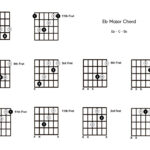I recently acquired a Fender Hellcat Guitar, and it’s been quite an interesting experience. For those unfamiliar, the Fender Hellcat is a unique little instrument. It boasts a laminated sapele back and sides, topped with solid sapele, all in a comfortable Triple O-size body. It even comes equipped with built-in electronics, including a surprisingly handy onboard tuner.
I’ve always been intrigued by these guitars, often stopping to play them whenever I encountered one in a music store. There’s something appealing about their compact size and bright tone. So, when a Fender Hellcat popped up for sale on Craigslist in Anchorage recently, I decided it was time to finally grab one. A quick drive up Hiland Mountain later, and it was mine.
My initial impressions are quite positive. Acoustically, the Fender Hellcat guitar has a pleasant voice, and when plugged in, it sounds equally good. In fact, I even used it to play a couple of songs at church this morning, and it performed admirably.
However, it’s not all perfect. There are a couple of things that immediately stood out as less than ideal. First, the pickguard. While it has a cool, retro Fender vibe, it’s incredibly thick – a five-ply behemoth more akin to what you’d find on an electric guitar. To make matters worse, it was warped and starting to pull away from the guitar top, particularly near the soundhole. It felt and looked out of place on this otherwise well-designed acoustic.
The solution, thankfully, was straightforward. This afternoon, the oversized pickguard had to go. I considered using a pre-cut Martin-style tortoiseshell pickguard I had on hand. However, after placing it on the top and stepping back to assess, I decided against it. The tortoiseshell just didn’t quite fit the aesthetic I was going for. Instead, I’ve opted to order some thin black plastic pickguard material. My plan is to use the original, albeit flawed, pickguard as a template to create a more streamlined replacement.
Why black plastic instead of tortoiseshell? Simply put, cost and consistency. A sheet of black pickguard material from StewMac is a mere $10, while tortoiseshell plastic would cost more than triple that. Plus, tortoiseshell can be a bit unpredictable in its appearance – you never quite know exactly what you’re going to get. Black, on the other hand, is always black. It’s clean, classic, and I’m confident it will look just fine.
Now, for those who might suggest going pickguard-less (no thanks) or, even worse, a clear pickguard (shudder…), there’s a slight issue. Unfortunately, the guitar top does have a subtle sun tan line where the original pickguard was. I was hoping to avoid this, as it would have given me more freedom with the replacement shape. But alas, the sun has left its mark. So, a thinner, lighter pickguard in the original shape it is.
The other area of concern is the tuning gears. They are, to put it bluntly, cheap. These three-on-a-plate tuners have far too much play and slop for my liking. I have a collection of spare tuning gears, but none are direct drop-in replacements for these. This is something I’m going to need to ponder a bit before making any changes. It might require a bit more effort to find the right set.
Despite the pickguard and tuner issues, I genuinely think the Fender Hellcat guitar is a fantastic little instrument. It’s fun to play, sounds good, and has a unique character. I’m definitely happy it found its way to me, and with a few minor tweaks, I think it will be even better.


